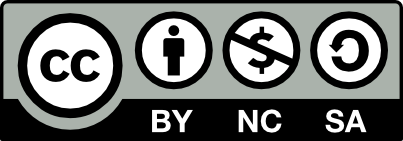Checking for non-preferred file/folder path names (may take a long time depending on the number of files/folders) ...
This resource contains some files/folders that have non-preferred characters in their name. Show non-conforming files/folders.
This resource contains content types with files that need to be updated to match with metadata changes. Show content type files that need updating.
Modeling hydrologic controls on particulate organic carbon contributions to beach aquifer biogeochemical reactivity
| Authors: |
|
|
|---|---|---|
| Owners: |
|
This resource does not have an owner who is an active HydroShare user. Contact CUAHSI (help@cuahsi.org) for information on this resource. |
| Type: | Resource | |
| Storage: | The size of this resource is 109.2 MB | |
| Created: | Jul 08, 2020 at 6 p.m. (UTC) | |
| Last updated: | Oct 24, 2024 at 7:29 p.m. (UTC) (Metadata update) | |
| Published date: | Oct 24, 2024 at 7:29 p.m. (UTC) | |
| DOI: | 10.4211/hs.7e8f77da6bd345ed9bf74c0b7f7c911f | |
| Citation: | See how to cite this resource | |
| Content types: | Model Instance Content |
| Sharing Status: | Published |
|---|---|
| Views: | 3291 |
| Downloads: | 72 |
| +1 Votes: | Be the first one to this. |
| Comments: | No comments (yet) |
Abstract
The intertidal zone of beach aquifers hosts biogeochemical transformations of terrestrially-derived nutrients that are mediated by reactive organic carbon from seawater infiltration. While dissolved organic carbon is often assumed the sole reactive organic carbon component, advected and entrapped particulate organic carbon (POC) is also capable of supporting chemical reactions. Retarded advection of POC relative to groundwater flow forms pools of reactive carbon within beach sediments that support biogeochemical reactions as dissolved solutes move across them due to transient groundwater flow. In this work, we simulate the contribution of POC to beach reactions and identify parameters that control its relative contribution using a groundwater flow model (SEAWAT) and reactive transport model (PHT3D). Results show transient contributions of POC to denitrification, as the spatial extent of the saline circulation cell varies over time due to changing hydrologic factors. A decrease in POC retardation and an increase in tidal amplitude during POC deposition resulted in POC expansion, which increased the relative contributions of POC to beach reactivity. Decreased hydraulic conductivity and increased tidal amplitude post-deposition decreased the utilization of POC for denitrification by allowing the oxic, saline water to completely encompass the pool of POC. Results highlight that POC is an intermittently-utilized source of carbon that displays complex spatial relationships with groundwater flow conditions and overall beach biogeochemistry. This work demonstrates that POC may be a periodically important, but overlooked contributor to biogeochemical reactions in carbon-poor beach aquifers. This resource contains the input and output files for the base case model.
Subject Keywords
Content
Additional Metadata
| Name | Value |
|---|---|
| README | Basecase_Hydroshare README (Newark, DE, July 8 2020) - Kyra H. Kim (kyrakim@udel.edu) This resource contains the input files for the base case model scenario presented in Kim et al., 2020, Modeling hydrologic controls on particulate organic carbon contributions to beach aquifer biogeochemical reactivity, Water Resources Research. Due to size limitations, the output file from Phase I modeling (MT3D.FLO) was not included. Details on modeling set up can be found within the manuscript. Phase I modeling was conducted using the SEAWAT code, while Phase II modeling was done using the PHT3D code. Directory is as follows: 1) PHT3D_input: input files for Phase II modeling 1-i) With_DOC_input: input files that include DOC infiltration 2) PHT3D_output: UCN output files for Phase II modeling 2-i) With_DOC_output: UCN output files for model case that includes DOC infiltration 3) SEAWAT_input: base case input files for Phase I modeling 4) SEAWAT_output: base case CNF and UCN output files for Phase I modeling, does not include .FLO file |
| MIGRATED_FROM | Model Instance Resource |
Related Resources
| This resource is described by | Kim et al., 2020, Modeling hydrologic controls on particulate organic carbon contributions to beach aquifer biogeochemical reactivity, Water Resources Research. https://doi.org/10.1029/2020WR027306 |
Credits
Funding Agencies
This resource was created using funding from the following sources:
| Agency Name | Award Title | Award Number |
|---|---|---|
| National Science Foundation | CAREER: Quantitative Education and Analysis toward Integrating Scales of Water Exchange between Land and Sea | EAR-1151733 |
| National Science Foundation | HydrologicalControl of Particle Entrainment and Nitrogen Cycling in Beach Aquifer Mixing and Reaction Zones | EAR-1246554 |
How to Cite
This resource is shared under the Creative Commons Attribution-NoCommercial-ShareAlike CC BY-NC-SA.
http://creativecommons.org/licenses/by-nc-sa/4.0/

Comments
There are currently no comments
New Comment